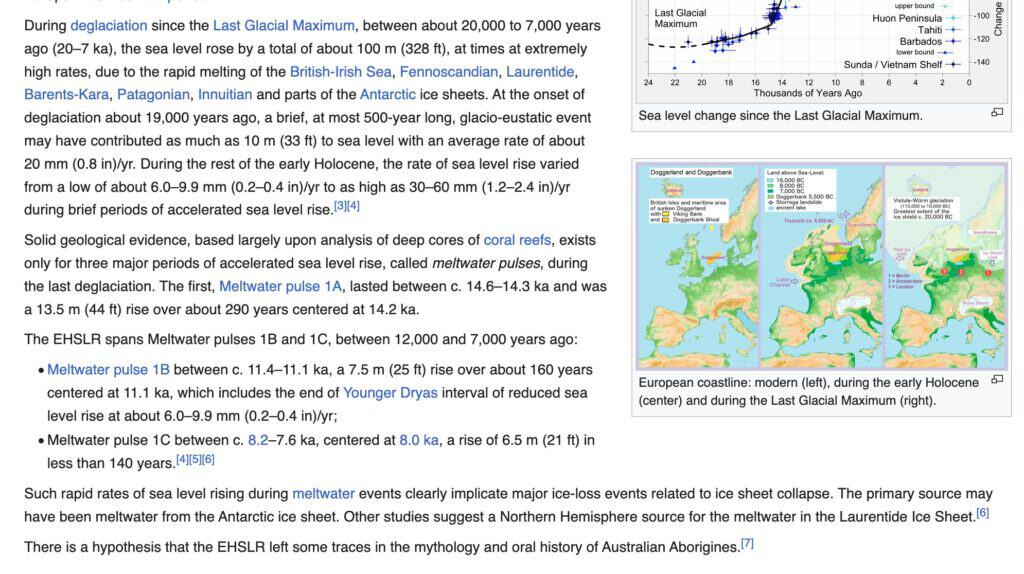Table of Contents

Summary:
- Sea rise between 20,000 to 7,000 years ago
- In line with 2 phases of Egypt’s Civilisation
- Sea level rise with 20mm per year, however, there are 3 major periods of accelerated sea level rise.
- Meltwater Pulse 1a, 1b and 1c.
- 1a: between 14,600 to 14,300 years ago – 13,5m rise over about 290 year
- 1b: between 11,400 and 11,100 years ago – 7.5m rise over about 160 years
- 1c: between 8,200 to 7,600 years ago – 6,5m rise in less than 140 years
Ancient Aboriginals stories
https://theconversation.com/ancient-aboriginal-stories-preserve-history-of-a-rise-in-sea-level-36010
Several decades ago, linguists working with Aboriginal groups along the Queensland coastal margin recorded stories about a time when the ancestors of these people lived at the coast “where the Great Barrier Reef now stands”.
One version of the story collected from the Yidindji people of the Cairns area recalls a time when Fitzroy Island was part of the mainland and offshore Green Island was four times larger. The story describes several named landmarks with remembered historical-cultural associations that are now underwater.

We can be almost certain that the people of this area did occupy the coast “where the Great Barrier Reef now stands” during the last ice age for it would have comprised broad floodplains and undulating hills with a range of subsistence possibilities, bordered in most parts by steep cliffs plunging down to the narrow shore.
The question is whether the details in these stories recall this time for, if they do, then the story might date from as much as 13,000 years ago. A more conservative interpretation, based on a sea level just 30 meters (98.43 feet) lower than today, would place the age of this story at around 10,000 years ago.
Similar stories come from Spencer Gulf in southern Australia. Those from the Narrangga people of Yorke Peninsula recall the time when there was no Spencer Gulf, only “marshy country reaching into the interior” lying just above the ocean surface and dotted with “freshwater lagoons” where birds and other animals flocked.
One day the sea came in, perhaps through the breaching of a natural barrier, and the area has since been submerged. If these stories refer to flooding across the outermost lip of Spencer Gulf, which today lies around 50 metres below present sea level, then they may have originated 12,000 years ago. Even if they refer to inundation of the central part of the Gulf, they are likely to be more than 9,000 years old.

